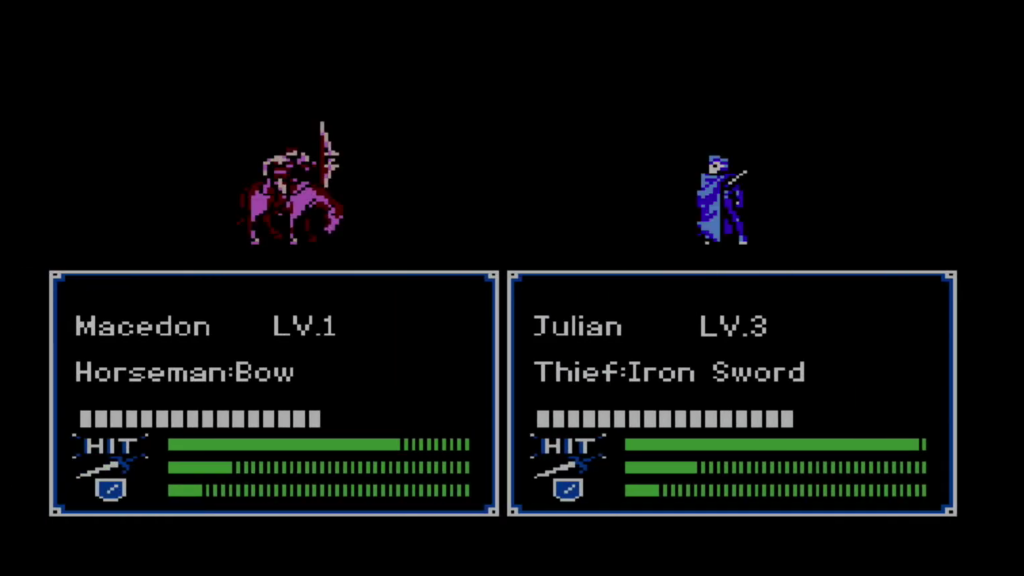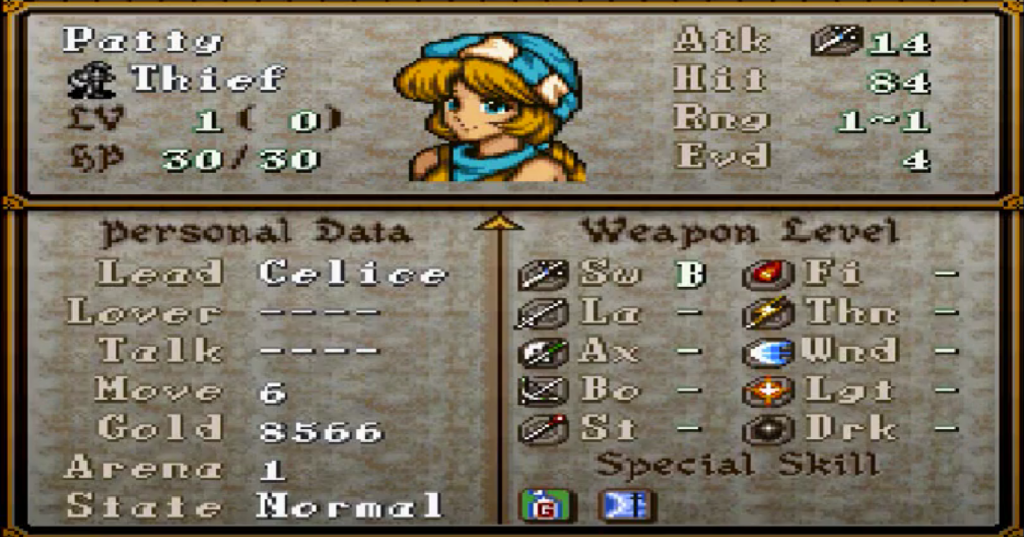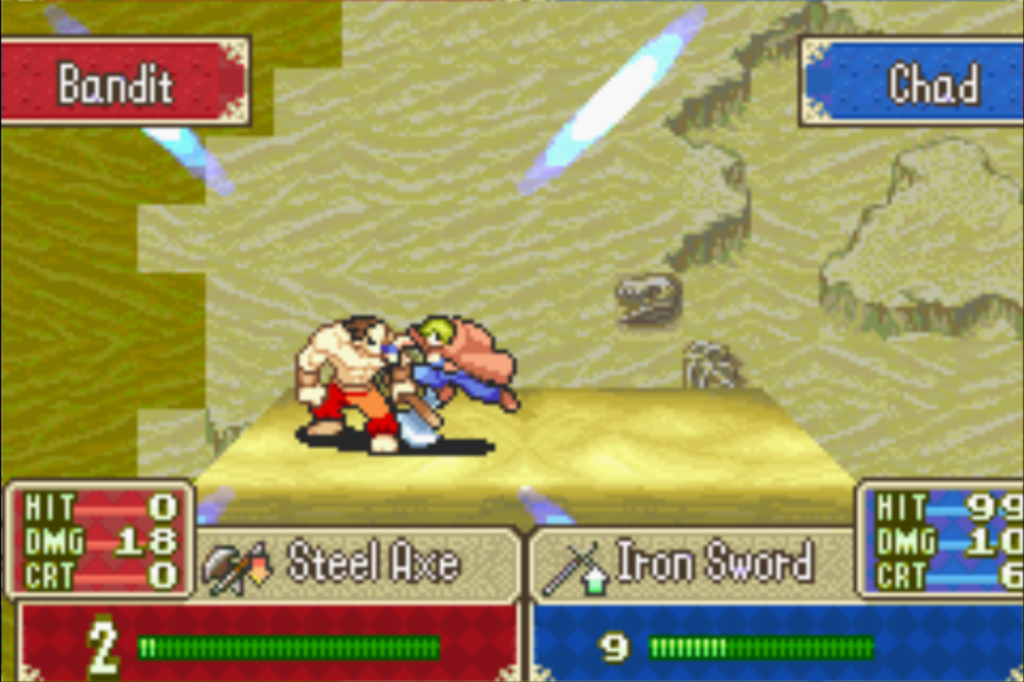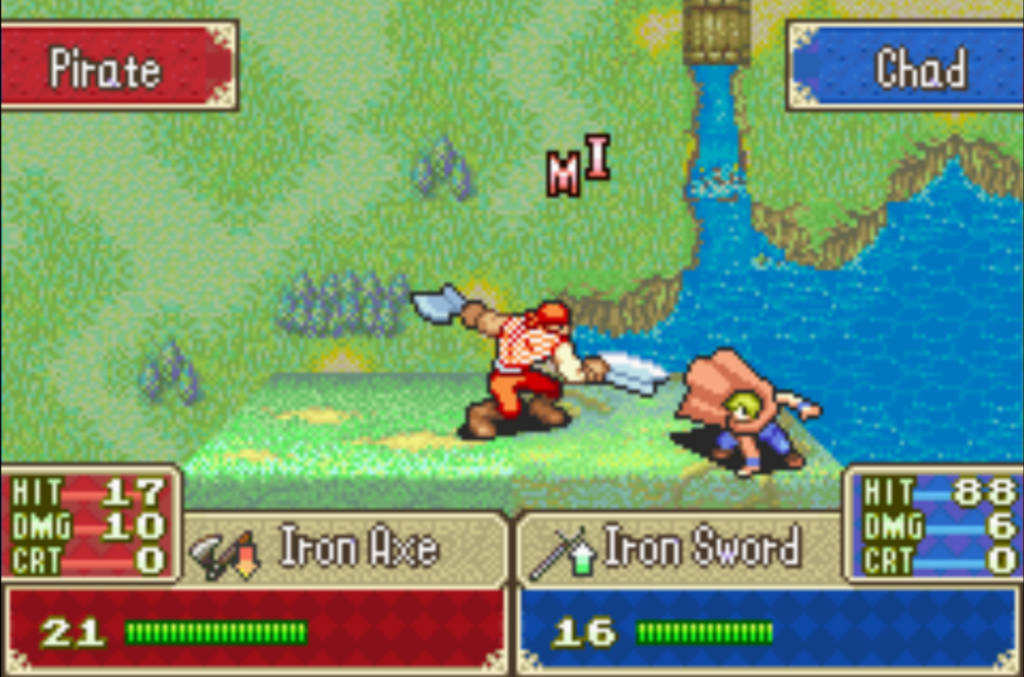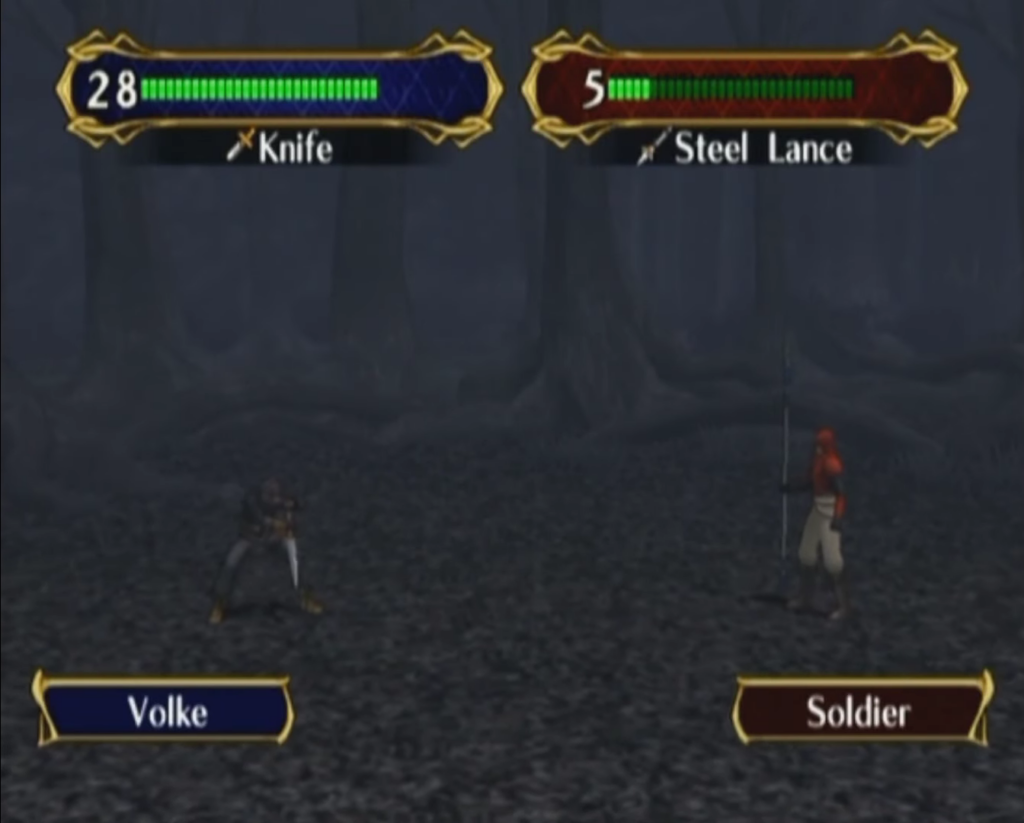- Fire Emblem Wyvern Rider - June 23, 2022
- Fire Emblem Assassin - June 8, 2022
- Fire Emblem Wyvern Lord - June 8, 2022
Sly Cooper and the Thievious Raccoonus is one of my all-time favorite games. However, the Thief archetype/stealing are things I’ve always been on the fence about in gaming.
For one, I typically play as goodie-two-shoes in most games. But more than that, I find thievery in many games to be niche and an undercooked gameplay element. I found the Thieves Guild questline in Skyrim to be pretty meh, and I never bothered with pickpocketing or thieving in any of the Fallout games.
I’ve yet to play any of the Thief games (PC gamer blasphemy, I know. I’m working on it), so I can’t comment on those, though given the basis of those games, I assume the thievery is good.
That all changes in Fire Emblem. In Intelligent Systems’ long-running tactical RPG franchise. Here, taking advantage of the five-finger discount is necessary. It’s time to get in touch with your sneaky side because we’ve got some pockets to pilfer.
History of the Thief
The Thief is one of the original tier 1 classes in the series, debuting in Shadow Dragon & the Blade of Light. Thieves could unlock doors and chests with a Master Key (Later renamed Lockpick). The first Thief in the series is Julian. Thieves could not promote in the first game, nor did they have access to the Steal skill yet. Combined with their poor combat prowess, Thieves made for terrible units in Shadow Dragon & the Blade of Light.
Thieves were not a playable class in Fire Emblem Gaiden, and alongside its’ remake, Echoes: Shadows of Valentia, stand out as the only games in the series where you cannot field a Thief. Julian and fellow original Thief Rickard return in Mystery of the Emblem, but their status hasn’t changed much. Julian played a relatively significant role in the story and recruitment of several characters, but the Thief class remained mediocre. They could still open chests and doors, but keys allowed other characters to do the same.
The Thief class finally got a chance to shine in Genealogy of the Holy War. Genealogy of the Holy War marks the first game where Thieves can use the Steal skill.
Steal works differently in Genealogy of the Holy War than it does in the rest of the games in the series. For starters, you can use the Steal skill and attack at once. In later games, Thieves can either attack or use Steal. But when you think about it, it does make sense.
If someone pokes a blade into your arm and drops you to your knees, you’re in a vulnerable enough position to have your pockets pilfered. Additionally, Steal could only take gold away from enemies, not items. Some enemies spread throughout the series drop gold when you kill them, but you cannot swipe gold after the Genealogy of the Holy War.
Genealogy of the Holy War also gave Thieves their first promotion class: the Thief Fighter. Thief Fighters maintain their ability to use the Steal skill but have vastly improved combat abilities over the Thief. These changes were essential to keeping the Thief class relevant, as the entirely outdoors Genealogy of the Holy War does not have any chests or doors to unlock. With opening these being the Thief’s only purpose in the previous games, Intelligent Systems needed to give Thieves something else to do.
The follow-up Thracia 776 laid the foundation for the Steal skill that we know today. Gone is the ability to Steal enemy’s gold by attacking them, and in its place is the ability to Steal from their inventories. Thieves in Thracia 776 can Steal weapons, staves, or items so long as their Speed is higher than their enemy’s. Speed is never a problem for Thieves, and you will seldom run into enemies faster than them.
The new and improved Steal skill is not without limitations, however. Thieves cannot steal weapons or staves if their Weight is higher than your Thief’s Constitution. Lara has terrible a Constitution and an abysmal growth rate and won’t be able to Steal many overly useful weapons or staves (And she won’t be a Thief for long either).
Lifis also has a terrible Constitution growth rate but has a decent enough base to Steal things like magic tomes. Lara starts as a Thief but can promote into a Dancer instead of a Thief Fighter. As a result, Lifis, the other Thief in the game, and Perne, a recruitable Thief Fighter, are high-value characters to field. Unlike Lifis, Perne’s base Constitution is high enough to swipe some high-value weapons and staves.
Intelligent Systems took a significant step back with the Thief class in The Binding Blade. They removed the Thief Fighter class from the series and didn’t replace it with anything. Thieves were back to being unable to promote. Additionally, the Steal skill saw a significant nerf as well. Thieves could no longer swipe the weapons or staves of enemy units (A trend that stuck around for all the GBA Fire Emblem games). Luckily, Thieves in The Binding Blade maintained their value in other ways.
The Blazing Blade tried to rectify the Thief’s lack of a promotion in The Binding Blade by allowing them to promote into Assassins. It failed, however, as it strips Thieves of their primary utility. Thieves that promote into Assassins in The Blazing Blade can still use Lockpicks, but they can no longer Steal. The pre-promoted Assassin Jaffar will be a better Assassin than any Thief you promote to the Assassin class, so there’s no reason to strip yourself of the very rare Steal ability.
Intelligent Systems got it together in The Sacred Stones, giving Thieves an additional promotion option. In addition to Assassins, Thieves could also promote into Rogues. Rogues are renamed Thief Fighters with lesser combat prowess and more utility. Rogues no longer need Lockpicks to unlock doors and chests and retain the Steal skill.
The Thief class went to a somewhat odd place in the first title of the Tellius Saga, The Path of Radiance. Thieves are again unable to promote, except Volke. Volke, for storytelling purposes, can promote into an Assassin. Thieves hit a new combat low in Path of Radiance with the introduction of Knives and the inability to promote.
They did at least regain their ability to steal enemies’ weapons (So long as their Strength is higher than the weapon’s Weight and Speed is higher than the enemy’s). Rogues return in Radiant Dawn, but no tier 1 Thieves are in the game. In the remakes of the first and third games, Shadow Dragon and New Mystery of the Emblem, Thieves don’t promote but can level up to level 30 to somewhat offset this downside.
Fire Emblem Awakening introduced a new promotion class for the Thief, the Trickster class. In Awakening, Tricksters maintain the same utility as Rogues of being able to unlock things without Lockpicks but can also use healing staves. Intelligent Systems likely gave them this additional utility to make up for the fact that Steal doesn’t exist in Awakening.
In Fates, Steal is again absent, and Thieves were renamed Outlaws and are a Nohrian-only class. For some bizarre reason, they use Bows instead of Knives and Swords. Outlaws can promote into Bow Knights or Tricksters, with the latter remaining the same as in Awakening (Except for the alternation to their weapon style of choice).
The Thief class and the Steal skill are back in Three Houses. Commoners and Nobles can promote into Thieves at level 10 by passing the Certification Exam with a C rank in Swords and an Intermediate Seal. Once again, you are unable to Steal weapons from enemies. Characters that wish to become Tricksters need to have passed the Thief exam first.
The standout feature of the Thief class in Three Houses is that the Steal skill is available after mastering the Thief class. In other words, you can master the Thief class, re-class to something else, and still have access to Steal.
What Makes A Thief?
Thieves are all about stealing items and unlocking doors and chests. While characters of any class can unlock things with door or chest keys, only Thieves and some of their promotion class options can Steal (Until Three Houses).
Numerous Thieves in the series follow the Julian archetype, laid by the first Thief in the series. These thieves are early game units that typically have connections to either the early game Cleric or early game Myrmidon. Many games in the series will throw a Julian Thief at you almost immediately and another Thief somewhere before the midgame. The second Thief tends to be on the same level as the first Thief, provided you have been training them.
Thanks to their one-of-a-kind ability, Thieves are essential in every game except Fates and Awakening, where Steal doesn’t exist. It’s wise to make a habit of scouting the inventories of every enemy on a given map to see what they have.
In many Fire Emblem games, Steal gives you early access to items that you can’t obtain until later in the game (Like promotion items) or, in extreme cases, items you cannot get otherwise (Like the Member Card and Silver Card in The Blazing Blade). What stealable item an enemy may or may not have can completely change how you progress through a map to avoid killing said enemy too soon.
Thieves have a couple of other things going for them aside from their ability to Steal. Poor Movement is typically one of the trademark flaws of all infantry units in Fire Emblem. However, this weakness does not necessarily apply to Thieves. Thieves have superior Movement to other infantry units and retain their better Movement on maps where other units (Infantry or otherwise) suffer penalties. Thieves also make for excellent scouts, having superior fields of vision than other classes. On Fog of War maps, Thieves can function as pseudo-torches.
Thieves in The Binding Blade have a unique value in Chapter 14: Arcadia. There are eight items buried beneath the side on this map that you can acquire. Any non-Thief character has a 1-in-9 chance of finding an item if they end their turn in a zone with an item in it. But thieves? Thieves have a 100% chance. And since you need to clear this map within 25 turns to unlock the next bonus chapter, you can’t afford to waste time trying to find this stuff.
But getting the most out of any Thief requires getting close to enemies and strolling deep into enemy territory, so learning the pros and cons of the class is necessary.
Thieves, as you would expect, are very fragile units. They have excellent HP growth rates, but their poor base HP and terrible Defense and Resistance growths offset their HP growth. Since they can’t take a hit, the only option Thieves have for defending themselves is to avoid getting hit entirely. Their growth rates and typical stat spread allow them to function very well as Dodge Tanks. Try to keep them in terrain like Forests or Forts whenever possible. A trained Thief in a Fort is effectively immortal. Outside of terrain, trained Thieves should have good Avoid but still cannot take more than two hits from a powerful enemy before it is lights out.
Thieves typically have low base Strength and average at best Strength growth rates, so they may struggle with getting rid of enemies, or even dealing damage, especially early in the game. Thieves make up for this somewhat with their Speed, Skill, and Luck growth rates. Their Speed and Skill tend to be high, and their Luck above average.
As a result, Thieves are highly accurate and should have no problem doubling most enemies in the game. It’s a good idea to get them to C rank in Swords as quickly as possible to use Killing Edges for the increased chance of dishing out critical hits.
Training Thieves isn’t hard in the early game but becomes harder later. The early game of most Fire Emblem titles has many Axe-wielding units like Brigands and Fighters, who will have poor accuracy against Sword-wielding Thieves. You can easily leave a Thief in some terrain and allow them to solo them all. Because of how weak Thieves are, they get more combat experience than other classes. You can also let them take on some Soldiers so long as you place your Thieves in terrain.
The Thief class is obviously at its’ weakest in Awakening and Fates, where Steal doesn’t exist. Fire Emblem Fates is probably the worst game since it locks Thieves to Bows. It also isn’t doing too great in Three Houses. Since units retain the Steal skill after mastering the Thief class, there’s no real reason to remain a Thief.
How Many Playable Thieves Exist In Fire Emblem?
So far, there have been 19 playable Thieves in Fire Emblem.
- Julian (Shadow Dragon & the Blade of Light, Mystery of the Emblem, Shadow Dragon, New Mystery of the Emblem)
- Rickard (Shadow Dragon & the Blade of Light, Mystery of the Emblem, Shadow Dragon, New Mystery of the Emblem)
- Dew (Genealogy of the Holy War)
- Patty (Genealogy of the Holy War)
- Daisy (Genealogy of the Holy War)
- Lifis (Thracia 776)
- Lara (Thracia 776)
- Chad (The Binding Blade)
- Astolfo (The Binding Blade)
- Cath (The Binding Blade)
- Matthew (The Blazing Blade, Awakening)
- Legault (The Blazing Blade)
- Colm (The Sacred Stones)
- Volke (Path of Radiance)
- Sothe (Path of Radiance)
- Gaius (Awakening)
- Niles (Fates: Conquest, Revelation, Warriors)
- Nina (Fates: Conquest, Revelation)
- Anna (Fates)
Who Is The Best Thief In Fire Emblem?

Lara is a standout Thief in the series, but this is because she can promote into a Dancer, not because of her thievery. Sothe is probably the best Thief, but only in his appearance as a Rogue in Radiant Dawn. In one of the few instances in the series, a promoted Thief functions as your Jagen unit. Factor in the usual benefits of his class, and Radiant Dawn Sothe is a great unit.
Is The Thief Class Good?
Absolutely.
Thieves bring something to the table that no other class can. It’s hard to describe on paper how useful the Steal skill is, but once you experience it for yourself, you’ll completely understand. Even if it’s just swiping Vulneraries from enemies, it is one of the most clutch abilities in the series.
Thieves are in something of a tight spot in the games where they cannot promote. You don’t want to give them too much experience, but you also need to keep them alive. They can’t function as Dodge Tanks at base, so you need to find a happy medium.
The amount of enemy loot in any given game determines the value of the Thief in the long run. If there’s nothing especially useful to snatch away from enemies, you have no reason to field a Thief. Several campaigns have endgames where your Thieves are pretty much permanently benched because they’ve outlived their usefulness.
Thieves are a must-field unit for most campaigns despite their inconsistent endgame value. I am one of those Fire Emblem players who reset if any character dies, even if it’s not an overly useful one. But there are plenty of players out there that will push on even if they suffer casualties. But even if you are one of those players, if one of your Thieves bites the bullet, I recommend resetting your game. That’s how valuable they are.
FAQs
Question: Who is the worst Thief in the series?
Answer: Definitely Cath from The Binding Blade. You have to speak with her several times with Roy before she joins you. And by the time she’s playable, she joins with awful bases, and you have two superior Thieves in Chad and Astolfo. She’s dead on arrival.
Question: Is it ever worth promoting a Thief into an Assassin?
Answer: No. Thieves as Assassins will never be your best combat unit, but they will be your only option for using the Steal skill (Except in Three Houses).
Question: How much should I train a Thief in the games that they don’t promote?
Answer: Barring aside Arena-abuse, level 10 is a decent area to settle. That’s why units like Astolfo and Legault are higher in the Thief tier list. They require little training but provide instant value.
Conclusion
Swiper, yes swiping is how I would best describe how I feel about the Thief class in Fire Emblem. It’s actually quite fun to play and can also be a lifesaver in the games where you can take weapons, staves, and tomes. If you decide to play on a game’s hardest difficulty, Thieves are even more valuable than usual because you need all the help and items you can get.
I dislike how the Steal skill was effectively made a universal skill in Three Houses and would prefer the revert back to it only being available to Thieves or some of their promotion options. Otherwise, players will continue to ditch the Thief class after mastering it because the Thief never has been and never will be a top-tier combat class. Hopefully, the Thief class returns to form in the next installment of Fire Emblem, and hopefully, that game will have plenty of spoils for the taking.
For more interesting readings about Fire Emblem check out:



